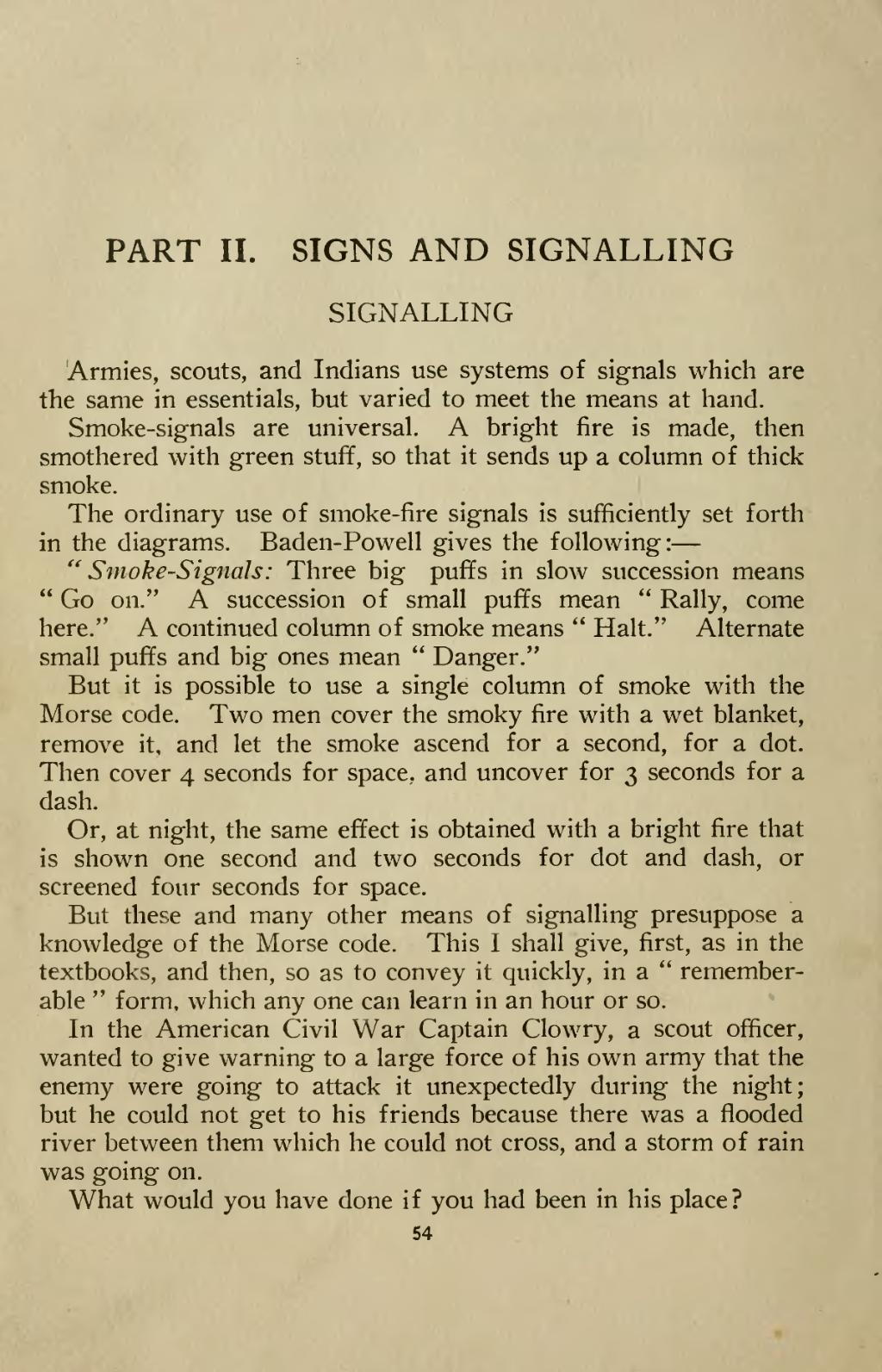PART II. SIGNS AND SIGNALLING
SIGNALLING
Armies, scouts, and Indians use systems of signals which are the same in essentials, but varied to meet the means at hand.
Smoke-signals are universal. A bright fire is made, then smothered with green stuff, so that it sends up a column of thick smoke.
The ordinary use of smoke-fire signals is sufficiently set forth in the diagrams. Baden-Powell gives the following:—
"Smoke-Signals: Three big puffs in slow succession means "Go on". A succession of small puffs mean "Rally, come here". A continued column of smoke means "Halt". Alternate small puffs and big ones mean "Danger".
But it is possible to use a single column of smoke with the Morse code. Two men cover the smoky fire with a wet blanket, remove it, and let the smoke ascend for a second, for a dot. Then cover 4 seconds for space, and uncover for 3 seconds for a dash.
Or, at night, the same effect is obtained with a bright fire that is shown one second and two seconds for dot and dash, or screened four seconds for space.
But these and many other means of signalling presuppose a knowledge of the Morse code. This I shall give, first, as in the textbooks, and then, so as to convey it quickly, in a "rememberable" form, which any one can learn in an hour or so.
In the American Civil War Captain Clowry, a scout officer, wanted to give warning to a large force of his own army that the enemy were going to attack it unexpectedly during the night; but he could not get to his friends because there was a flooded river between them which he could not cross, and a storm of rain was going on.
What would you have done if you had been in his place?
